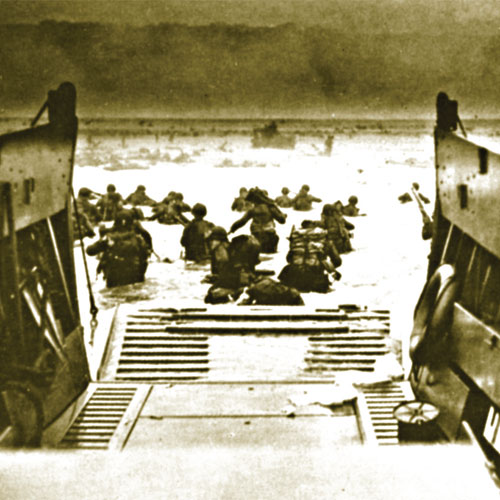On this day some 71 years ago, on the 7th December 1941, the Japanese violated American neutrality by bombing the Naval Base at Pearl Harbour. This was to bring the United States of America into direct conflict with not only Japan, but all the other Axis Forces, including Germany.
Many Americans firmly believed, quite rightly, that their enemy was the Japanese nation. However, the ‘Arcadia’ conference of 1942 decided that the initial priority of the Allied war effort should go first to the defeat of Germany.
A number of operations were contemplated for 1942 and 1943, but in simple terms, the time was not right. There were other campaigns to fight. It was not until March 1943, that a British General, Sir Frederick Morgan, was summoned before the British War Cabinet and instructed to develop a Cross Channel Invasion.
The planning staff were mainly British and Americans – their directive – ‘to defeat the German fighting forces in North West Europe’, and it remains one of the best examples of joint British – American cooperation. The eventual plan, would result in the cross channel invasion taking place on 6th June 1944, commanded by General Dwight D. Eisenhower.
American troops were to be heavily involved in the planning and execution of ‘D-Day’. As is well known, the invasion took place in Normandy over five beaches, UTAH, OMAHA, GOLD, JUNO and SWORD.
The American beaches Utah and Omaha are two totally different stories. ‘Utah’ was necessary to ensure the capture of the deep water port of Cherbourg. Therefore two Airborne Divisions were to be dropped into the dark, waterlogged Normandy countryside in the early hours of 6th June, behind Utah beach, with a view to consolidating a grip and then linking up with the seaborne troops of the 4th Infantry Division.
The drops went very badly because of bad weather, anti-aircraft gunfire and navigational errors, but the airborne men were able to secure their objectives and awaited the arrival of their seaborne troops. Because of Guide boat problems, the Infantry men, led by Brig. Gen. Theodore Roosevelt, were to land in the wrong location, this mistake was to lead to a successful landing and link-up, with only 197 casualties.
Meanwhile, the men approaching ‘Omaha’ beach at the same time, 0635 hrs, were experiencing all sorts of problems. The weather was not particularly good, resulting in very heavy seas, causing some landing craft to swamp.
Although all the beach defences were not complete, the German troops overlooking the beach were well prepared and quite simply waited for the landing craft to approach the beach then opened fire. The invading troops had nowhere to hide, thus incurring many casualties. However, the surviving troops were able to secure a foothold on ‘Bloody Omaha’.
Further to the West, ‘Rudders Rangers, were scaling the cliffs of Pointe du Hoc, to eliminate the guns overlooking the beaches. The guns were not in situ; they had been moved further inland. This did not deter the Rangers, a small patrol found the guns and put them out of action.
At the end of the day, as with all the troops landing on ‘D-Day’, not all objectives had been secured, but a foothold had been gained on mainland Europe.
The Normandy Campaign was to last for 77 days, with many casualties. Success would come for the Americans with the breakout in late July, ‘Operation Cobra’. A push would be made down the Cotentin Peninsular, towards Brittany,
whilst the British and Canadians would push down in the east from Caen.
Ultimately, the campaign would come to an end in mid August with the story of the ‘Falaise Gap’, with the Americans pushing up from the south to link up with the Canadians, Polish and British near to Falaise.
There is little doubt that without American input, ‘D-Day’, and the Normandy Campaign in particular, might well have failed.
You can find out more about the D-Day Landings in Normandy on our insightful tour that includes a visit to both the British and American sectors.

